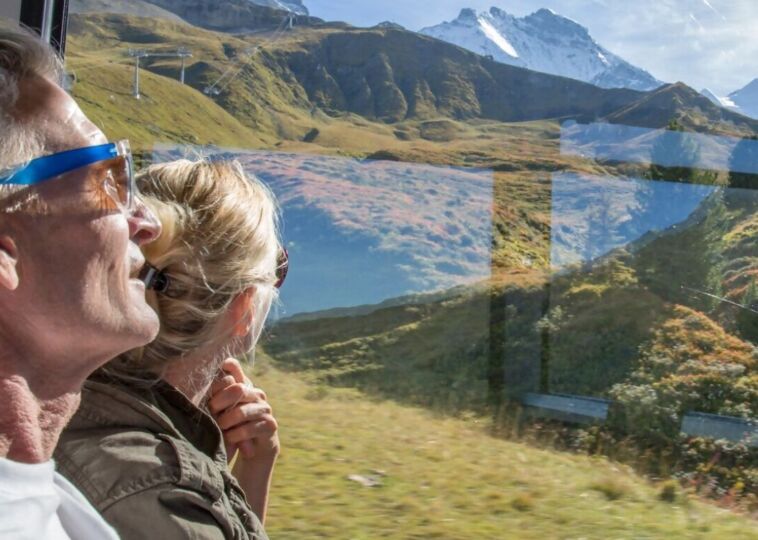Train Travel Hacks: Why It’s the Best Way to Explore!

Contents [hide]
If you ask any seasoned traveler, there’s a good chance they’ll tell you that train travel holds a special place in their hearts. As someone who clocked countless miles by air, road, and rail across continents, I have to say there’s something magical about traveling by train.
It’s not just about getting from Point A to Point B; it’s about the journey itself. Unlike the stress of airports or the monotony of highways, train travel can be a refreshing and efficient way to explore new destinations.
Unmatched Comfort and Space

Get real momentarily; most don’t associate comfort with air travel. Whether it’s the cramped legroom, the narrow seats, or that awkward battle over the shared armrest, flying can feel more like a test of patience than an enjoyable part of the journey.
It often leaves us feeling stiff, tired, and longing for the moment we can finally stretch out. But there’s another way to travel that turns this whole scenario on its head: train travel. Unlike planes, trains offer comfort and space, making the journey bearable and enjoyable.
In contrast, trains provide a sense of freedom and relaxation that’s hard to match. With ample legroom, spacious seating, and the ability to walk freely, trains deliver a liberating travel experience. Instead, you can stand up, stroll to the dining car, or wander the aisle to stretch your legs.
Scenic Views You Won’t Find Anywhere Else

Unlike planes that fly high above the terrain or cars stuck on monotonous highways, trains travel through the heart of landscapes. It’s not just travel; it’s nature’s moving canvas. Train journeys are often meticulously planned to highlight the most captivating aspects of a region.
Trains don’t just provide a window to nature’s splendor; they also offer a unique perspective on both urban and rural life.
This dual exposure to natural beauty and human culture gives train travel an unmatched richness and depth, allowing you to see a country as it is. Unlike cars, where the driver focuses on the road, or planes, where the tiny window limits your camera lens, trains offer unobstructed views of the world outside.
Stress-free Check-in and Boarding

Traveling shouldn’t feel like a never-ending obstacle course, but that’s often what you get with air travel. They have all been there, and it’s exhausting. But here’s the good news: train travel offers a refreshingly straightforward alternative. When you travel by train, all those airport hassles disappear.
With rail travel, it’s as simple as showing up at the station with your luggage in tow and hopping on. It’s a no-fuss, no-muss way to get from point A to point B without the usual headaches of flying. Most train stations have minimal security checks, meaning you can walk right, grab a coffee, and head straight to your platform.
There’s no waiting at baggage claim or risk of lost luggage; it’s all right with you. All know the drill: arrive at the airport hours ahead of your flight just to be safe. You can show up just 15 or 20 minutes before departure, stroll to your train, and board without the mad dash or stress.
Environmentally Friendly Travel

Short of cycling or walking, nothing beats the environmental benefits of rail travel. While it may not always be the most obvious choice, trains offer a sustainable alternative to cars and planes, significantly reducing your carbon footprint without sacrificing comfort or convenience.
Trains are inherently more energy-efficient than other modes of transport. They can move many passengers using less energy due to the reduced friction between steel wheels and tracks.
This efficiency is further amplified when trains run on electric power rather than diesel, especially in countries where the electricity grid is powered by renewable energy sources like wind, solar, or hydroelectricity. In these cases, trains can potentially operate with near-zero emissions, pushing them far ahead in the race to sustainable travel.
Flexibility and Freedom to Roam

One of the hidden gems of train travel is the incredible flexibility it offers. Unlike flying, where you’re often locked into tight schedules and face penalties for changes, train travel provides a rare level of freedom in modern transportation. The spontaneity of train travel means you can follow your curiosity, letting the journey unfold as you go.
This makes train travel a practical choice and a more mindful and engaging way to explore new places. Furthermore, many train routes offer flexible ticket options, allowing travelers to hop on and off at different stops, creating a tailor-made adventure.
The ease of changing plans and the ability to explore destinations at your own pace is a liberating aspect of train travel that can’t be matched by flying or driving. This is the ultimate travel hack for the adventurer at heart: an open ticket to roam as far as the tracks will take you.
Cost-effective for Longer Journeys

From baggage fees to seat selection charges and overpriced airport food, the expenses can pile up quickly, turning a seemingly cheap flight into a costly endeavor. This is where trains, particularly overnight options, offer a compelling alternative that’s both budget-friendly and convenient. With an overnight train, you’re essentially getting two services for the price of one: transportation and accommodation.
It’s a seamless way to cover ground and save money, particularly in countries where train networks are well-developed and offer sleeper services. But the cost-effectiveness of train travel isn’t just about saving on hotels.
The value of train travel becomes even more apparent when you factor in the absence of surprise fees that are commonplace in air travel, such as charges for checked bags or choosing a seat. This can save you time and money on additional transport costs from the airport, making the overall journey more economical and convenient.
A Social Experience Like no Other

Train travel offers a social dynamic that planes and cars can’t replicate. Whether you’re journeying across Europe, navigating the scenic routes of India, or exploring Japan’s efficient rail network, there’s something special about the train atmosphere that encourages interaction.
Unlike airplanes, where cramped seats and the hum of in-flight entertainment often discourage conversation, trains provide an open environment that naturally fosters dialogue. These chance encounters can lead to meaningful discussions that deepen your understanding of the places you visit.
A fellow traveler might share their travel tales or introduce you to a local delicacy they’ve brought along, turning the journey into a cultural exchange that’s hard to find elsewhere. This sense of community and openness transforms the train from a mere means of transport to a vital part of your travel narrative.


